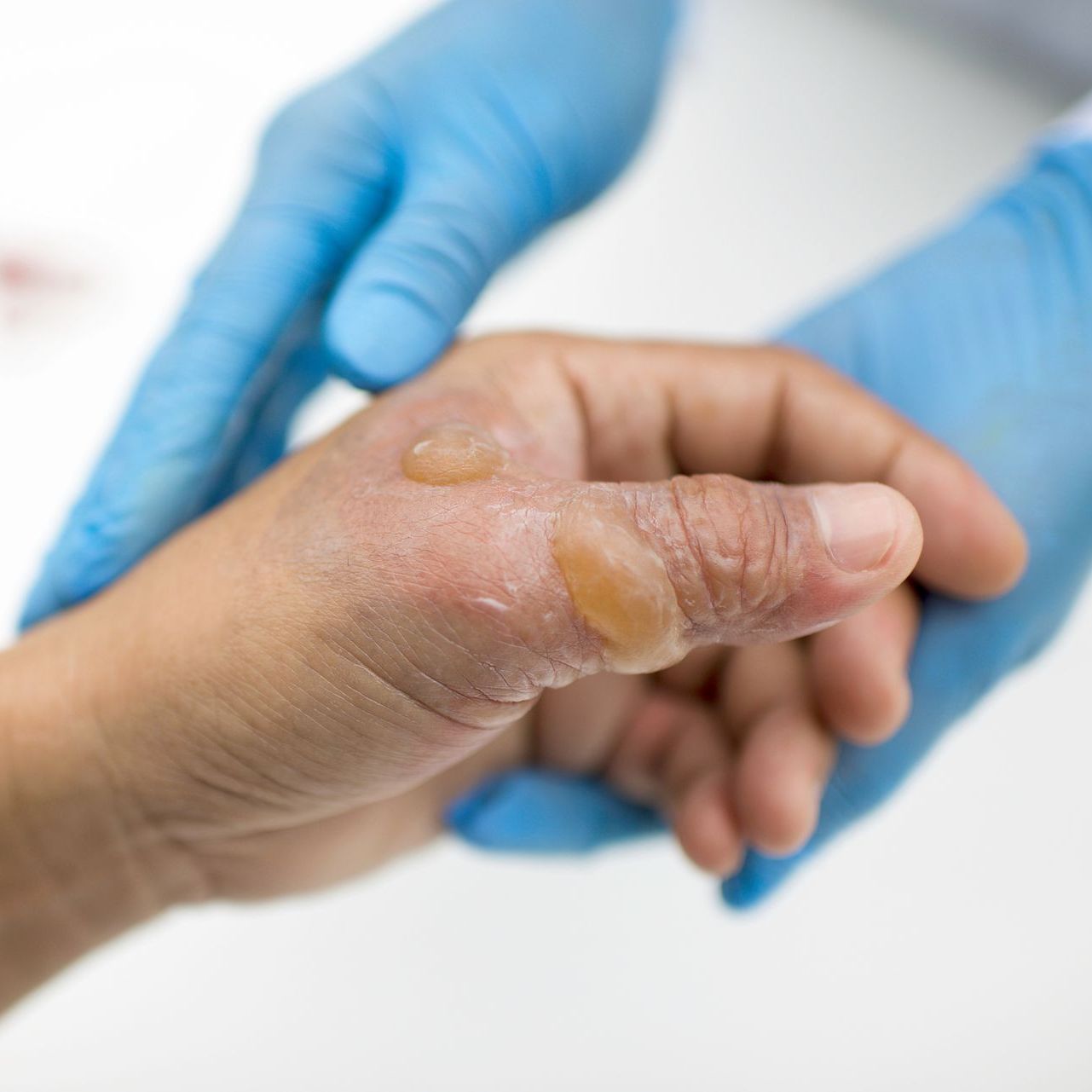Burn Care
Healthcare Services
Burn Care in Houston
If you, a family member, coworker or friend has suffered a severe burn, you should promptly go to the ER – but burn care doesn’t stop at emergency care. If you’re worried about subsequent infections or blistering, the experienced physicians at St. Hope will provide you with an effective, personalized treatment plan to mitigate stress during your recovery.
What Are the Different Types of Burns?
First-Degree Burns
First-degree burns only affect the outer layer of your skin and include mild sunburns and burns from brief contact with hot objects. They’re characterized by redness, minor inflammation and pain, but no blisters or permanent scarring. Marks from first-degree burns typically heal within a week. To treat, cool the burn with room-temperature water (not cold) and apply aloe vera or another type of mild burn cream.
Second-Degree Burns
Second-degree burns go one layer deeper, affecting the outer and underlying layers of skin, resulting in blistering, redness and severe pain or swelling that can make the skin appear almost wet or shiny. They’re usually the result of extreme sunburns or contact with scalding liquids.
Cool, wash and dress the burn as best you can before promptly seeking medical attention. Second-degree burns have the potential to cause widespread blistering that can cause extreme pain and an elevated risk of infection without proper medical attention. That said, second-degree burns typically heal within two to three weeks, with only some potential for scarring.
Third-Degree Burns
Third-degree burns extend to the deeper tissue and nerves beyond the dermis, necessitating more immediate professional attention. Third-degree burns are often caused by fire, electricity or prolonged exposure to hot objects. Third-degree burns often appear as white, charred or leathery skin.
If you sustain one of these burns or are with someone who has suffered a suspected third-degree burn, get medical attention immediately – don’t even try to cool or wrap it yourself, as there’s a high risk of infection. People with third-degree burns likely need specialized long-term treatment and potentially surgery to heal. There can still be significant scarring, even with thorough and proper burn care.
Fourth-Degree Burns
Fourth-degree burns are the most severe type of burn you could sustain. Typically due to high-voltage electrical injuries and severe fires, these burn all the way through to your muscles and bones, resulting in blackened skin and charred, exposed tissue. There’s a high risk of permanent disability and even death with this injury, making immediate and extensive emergency medical care essential.
Hospital Burn Care Services
- Fluid Resuscitation: Fluid resuscitation is utilized to help maintain hydration and blood pressure in the body after sustaining a large or severe burn, helping keep the patient’s body stable.
- Wound Care and Dressings: Going to a properly equipped clinic or an ER is the best way to ensure burn wounds receive expert cleaning and dressing with minimal risk of infection. Emergency care physicians are trained to know how to provide effective wound care and which treatments to use, such as antibiotic ointments and specialized burn creams.
- Surgical Interventions: Debridement is the surgical removal of dead tissue to prevent infection and help your body heal fully. In the event of a fourth, third-degree or deep second-degree burn, where the skin can’t naturally replace the burned skin cells, surgeons may use skin grafting to transplant healthy skin to the burn site from another part of the body, like the butt or inner thigh.
- Pain Management: While treating the immediate burn, physicians may give you anesthetics or nerve blockers to make treatment easier. If you’re still struggling with residual pain afterward, you can talk to one of the physicians at St. Hope about pain management strategies and a potential prescription.
Rehabilitation and Long-Term Care
In the event of a severe burn, you may have trouble moving the damaged area after it’s healed. Your physician will typically recommend physical therapy to help you restore your strength and normal range of motion. Physicians can also recommend scar management and reduction techniques, such as pressure garments or massage therapy, to minimize scarring – although if the burn is severe, surgery may be the only viable option to limit scarring.
If you’re struggling emotionally, we’ll help you find a counselor or emotional support groups with other survivors. Our team values physical and mental health equally and will work hard to help you make a full recovery after a traumatic burn injury.
Receive High-Standard, Personalized Care That Helps You Feel Supported Physically and Emotionally
At St. Hope Healthcare, we are committed to providing comprehensive and compassionate care for burn patients. Reach us at
(713) 778-1300
or through our
online portal to learn more and schedule an appointment.




